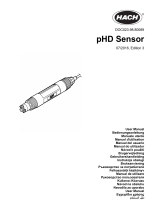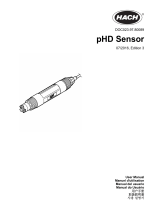
Table of Contents
Section 1 Specifications.................................................................................................................... 3
Section 2 General information......................................................................................................... 5
2.1 Safety information........................................................................................................................ 5
2.1.1 Use of hazard information................................................................................................... 5
2.1.2 Precautionary labels............................................................................................................ 5
2.1.3 Certification......................................................................................................................... 6
2.1.4 Restriction of hazardous substances (RoHS)..................................................................... 6
2.2 Product overview.......................................................................................................................... 7
2.3 Instrument connections................................................................................................................ 9
2.4 Product components.................................................................................................................... 9
Section 3 Installation........................................................................................................................ 11
3.1 Installation guidelines................................................................................................................. 11
3.2 Connect to AC power................................................................................................................. 11
3.3 Install the syringe....................................................................................................................... 12
3.4 Install the sensor storage tubes................................................................................................. 13
3.5 Install the stir bar and the beaker............................................................................................... 13
3.6 Prepare the tubes....................................................................................................................... 13
3.7 Connect the tubes...................................................................................................................... 14
3.8 Install the sensor........................................................................................................................ 14
3.8.1 Install the legacy adapter.................................................................................................. 14
3.8.1.1 Set the legacy adapter settings................................................................................ 15
3.8.2 Connect the sensor........................................................................................................... 15
3.9 Install the titrant and the reagent................................................................................................ 16
3.10 Tidy the work area.................................................................................................................... 17
Section 4 Install accessories..........................................................................................................19
4.1 Install an external pump............................................................................................................. 19
4.2 Install an external propeller........................................................................................................ 21
4.3 Install a balance......................................................................................................................... 21
4.4 Install PC software..................................................................................................................... 22
4.5 Install the syringe verification kit................................................................................................ 22
Section 5 User interface and navigation......................................................................................25
5.1 Keypad....................................................................................................................................... 25
5.2 Home screen.............................................................................................................................. 25
5.3 Menu structure........................................................................................................................... 26
Section 6 Startup............................................................................................................................... 29
6.1 Configure the instrument............................................................................................................ 29
6.2 Install the applications................................................................................................................ 30
6.3 Prepare the instrument for measurement.................................................................................. 30
Section 7 Standard operations...................................................................................................... 33
7.1 Calibration.................................................................................................................................. 33
7.1.1 Calibrate the sensor.......................................................................................................... 33
7.1.2 Calibrate the titrant............................................................................................................ 34
7.1.3 Auto leveling calibration.................................................................................................... 35
7.2 Sample preparation.................................................................................................................... 36
7.3 Get a sample measurement....................................................................................................... 36
7.4 Change the application settings................................................................................................. 38
7.4.1 Sample name.................................................................................................................... 38
7.5 Manage the data log.................................................................................................................. 39
7.6 Purge..........................................................................................................................................39
1




























